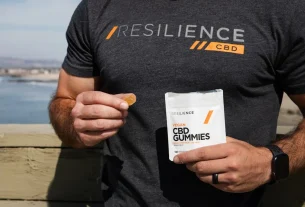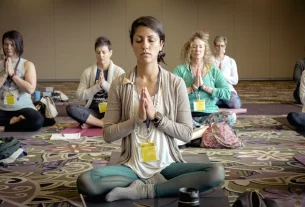Estimated Reading Time: 7 minutes
WW all strive for a healthy lifestyle, but sometimes we overlook the environment where we spend most of our time – our homes.
Did you know that the air we breathe inside can be more polluted than the air outside?
Creating a toxin-free home might sound daunting, but it’s a journey that can significantly impact your health and well-being.
This isn’t about becoming a minimalist overnight or throwing out everything you own.
It’s about making conscious choices, one step at a time, to reduce your exposure to harmful chemicals and create a truly healthy living space.
I remember when I first started exploring this path. I was overwhelmed by the sheer amount of information and conflicting advice.
Where do you even begin?
It took me a while, but eventually, I developed a system, and I’m excited to share my experiences and insights with you today.
The benefits of creating a toxin-free home extend far beyond simply feeling better.
Reducing your exposure to toxins can lead to improved respiratory health, fewer allergies, enhanced immune function, and even better sleep.
Consider the long-term effects, too: reducing your risk of chronic diseases like cancer and hormonal imbalances.
In essence, you’re proactively investing in your health and the health of your family.
Here’s a little something I learned from my own personal experience: I used to suffer from constant headaches, which I thought were just stress-related.
Then, I slowly started swapping out my cleaning products and using more natural options, and the headaches decreased significantly!
It was a real game-changer.
Knowing your enemies is half the battle. Several common household items contribute to indoor air pollution and exposure to toxins.
Let’s break down some of the most prevalent culprits:
Many conventional cleaning products contain harsh chemicals like ammonia, chlorine bleach, and phthalates.
These chemicals can irritate your skin, eyes, and respiratory system. Furthermore, some of them have been linked to more serious health problems.
Consider using natural alternatives like vinegar, baking soda, and essential oils.
There are also many fantastic eco-friendly cleaning product brands available now.
Those plug-in air fresheners and scented candles can seem inviting, but they often contain synthetic fragrances that release volatile organic compounds (VOCs).
These VOCs can contribute to indoor air pollution and trigger allergic reactions or asthma.

Instead, try using essential oil diffusers or opening windows for fresh air. Simple solutions make all the difference!
From shampoos and lotions to makeup, our personal care products are another area where we can inadvertently expose ourselves to toxins.
Many products contain parabens, sulfates, and artificial fragrances.
Check the ingredient list, and consider switching to natural and organic alternatives. Start small.
You don’t have to overhaul your entire routine overnight, but slowly incorporating safer options is a smart approach.
New furniture and flooring can release VOCs from adhesives, finishes, and upholstery.
Look for products with low VOC emissions or those that are certified as “GreenGuard” or “Greenguard Gold.” Whenever possible, opt for solid wood furniture and natural fibers for rugs and upholstery.
Here are some practical steps you can take today to begin your journey towards a toxin-free home:
Begin by evaluating your current cleaning products. Toss out anything with harsh chemicals and replace them with natural alternatives.
You can easily make your own cleaning solutions using ingredients like vinegar, baking soda, and lemon juice.
Alternatively, search for brands focused on sustainability and natural ingredients. You’ll be amazed by the impact this single step can have!
Ventilation is key! Open your windows regularly to let in fresh air. Consider investing in an air purifier with a HEPA filter to remove pollutants.
Also, introduce houseplants to naturally filter the air; they can be both visually appealing and beneficial.
Read labels carefully and choose products free from parabens, phthalates, and artificial fragrances.
There are many online resources and apps that can help you identify safe and healthy products.
Slowly replace items as they run out instead of a drastic change.
Install a water filter on your tap to remove contaminants like chlorine and lead.
These contaminants can be harmful if ingested and may affect the water you use for drinking, cooking, and bathing.
There are many effective and easy-to-install water filters on the market.
When purchasing new furniture, flooring, or paint, prioritize items with low VOC emissions.
Look for certifications like GreenGuard, which indicate that the product meets certain environmental and health standards.
This proactive step will create an atmosphere of good health.
While not strictly a toxin, plastic degrades over time and can leach chemicals.
Reduce your reliance on plastic by using reusable water bottles, food containers, and shopping bags.

Glass, stainless steel, and silicone are all excellent alternatives.
Let’s clear up some common misconceptions that people have about how to create a toxin-free home:
Creating a toxin-free home isn’t a one-time project; it’s a lifestyle change.
It involves making informed decisions, consistently learning, and adapting your approach as your knowledge grows.
Remember that every small step you take is a step in the right direction.
By focusing on the changes you *can* make, rather than being overwhelmed by the things you cannot control, you can create a healthier and happier living environment for yourself and your loved ones.
My journey started with swapping out my harsh cleaning products, and now, I’m continually learning and making new choices every day.
It’s a process of constant learning and improvement. It may seem like a lot, but the benefits, both now and in the future, make it all worthwhile.
This isn’t just about cleaning products; it’s about the bigger picture.
It’s about the air you breathe, the water you drink, and the products you bring into your home. So start today.
You have the power to create a sanctuary that supports your health and well-being.
Ready to dive deeper into the world of health and wellness?
Join our newsletter for weekly health tips!
Frequently Asked Questions
What are the most significant health benefits of creating a toxin-free home?
The advantages are far-reaching. Primarily, you’ll likely experience improved respiratory health, with reduced allergies and asthma triggers. Furthermore, you might notice a boost in your immune function and enhanced sleep quality.
Over the long term, minimizing toxin exposure can significantly reduce your risk of chronic diseases, including certain cancers and hormonal imbalances. It’s an investment in preventative health.
How can I determine if my existing cleaning products contain harmful chemicals?
The first step is reading the labels! Look for ingredients like ammonia, chlorine bleach, phthalates, and artificial fragrances. The Environmental Working Group (EWG) provides a fantastic resource, with their “Guide to Healthy Cleaning”. They have a database where you can look up products and see their safety ratings.
Also, familiarize yourself with the ingredients to avoid, so you can easily identify them on product labels.
Is it truly possible to eliminate all toxins from my home?
Completely eliminating all toxins is a difficult, if not impossible, goal. We live in a world where toxins are present in the air, water, and many of the products we use. The realistic goal is to minimize your exposure as much as possible. Focus on making incremental changes, prioritizing the biggest offenders first.
Consistency and dedication to reducing exposure over time are more crucial than achieving absolute perfection.
What are some easy and affordable ways to improve indoor air quality?
You don’t have to break the bank to see improvements. The most straightforward approach is to open your windows regularly to allow fresh air to circulate. Consider purchasing a houseplant, such as a spider plant or snake plant, which naturally filters air.
Regular cleaning to reduce dust and allergens also makes a difference. If you have a little more to invest, an air purifier with a HEPA filter can efficiently remove pollutants.
What are some common mistakes people make when trying to detoxify their home?
One common error is attempting too much, too soon. It’s better to start small and implement changes gradually. A second mistake is relying solely on expensive products or solutions, without considering simpler, budget-friendly alternatives.
Many assume that creating a toxin-free home requires a complete overhaul, which can be overwhelming. It’s essential to focus on the most impactful areas and make sustainable adjustments. Finally, a frequent error is neglecting to ventilate properly or to allow in fresh air.



